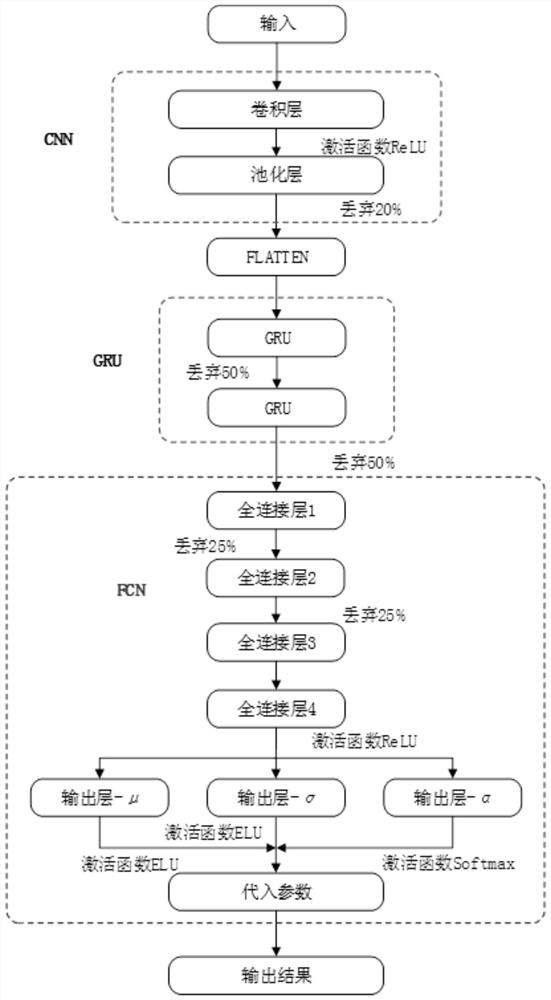Power load probability prediction system and method for multi-core intelligent meter
A probabilistic forecasting and power load technology, applied in forecasting, neural learning methods, data processing applications, etc., to achieve the effects of preventing overfitting, improving robustness, and fast training speed
- Summary
- Abstract
- Description
- Claims
- Application Information
AI Technical Summary
Problems solved by technology
Method used
Image
Examples
Embodiment Construction
[0049] refer to figure 1 As shown, a power load probabilistic forecasting system for multi-core smart meters, including convolutional neural network CNN, recurrent neural network GRU and mixed density network. The convolutional neural network CNN includes a convolutional layer and a pooling layer; the convolutional neural network CNN uses ReLU as the activation function; the pooling layer can discard 20% of the data and output it to the flatten layer to prevent overfitting during the training process; The convolutional neural network CNN and the cyclic neural network GRU are connected through a flatten layer. The flatten layer is used to reduce the dimensionality of the spatial features, and then form a feature vector with the historical load data, which is output to the cyclic neural network GRU.
[0050] The convolutional neural network is used to extract spatial features from historical environmental factor data, and construct spatial features and corresponding historical l...
PUM
 Login to view more
Login to view more Abstract
Description
Claims
Application Information
 Login to view more
Login to view more - R&D Engineer
- R&D Manager
- IP Professional
- Industry Leading Data Capabilities
- Powerful AI technology
- Patent DNA Extraction
Browse by: Latest US Patents, China's latest patents, Technical Efficacy Thesaurus, Application Domain, Technology Topic.
© 2024 PatSnap. All rights reserved.Legal|Privacy policy|Modern Slavery Act Transparency Statement|Sitemap



